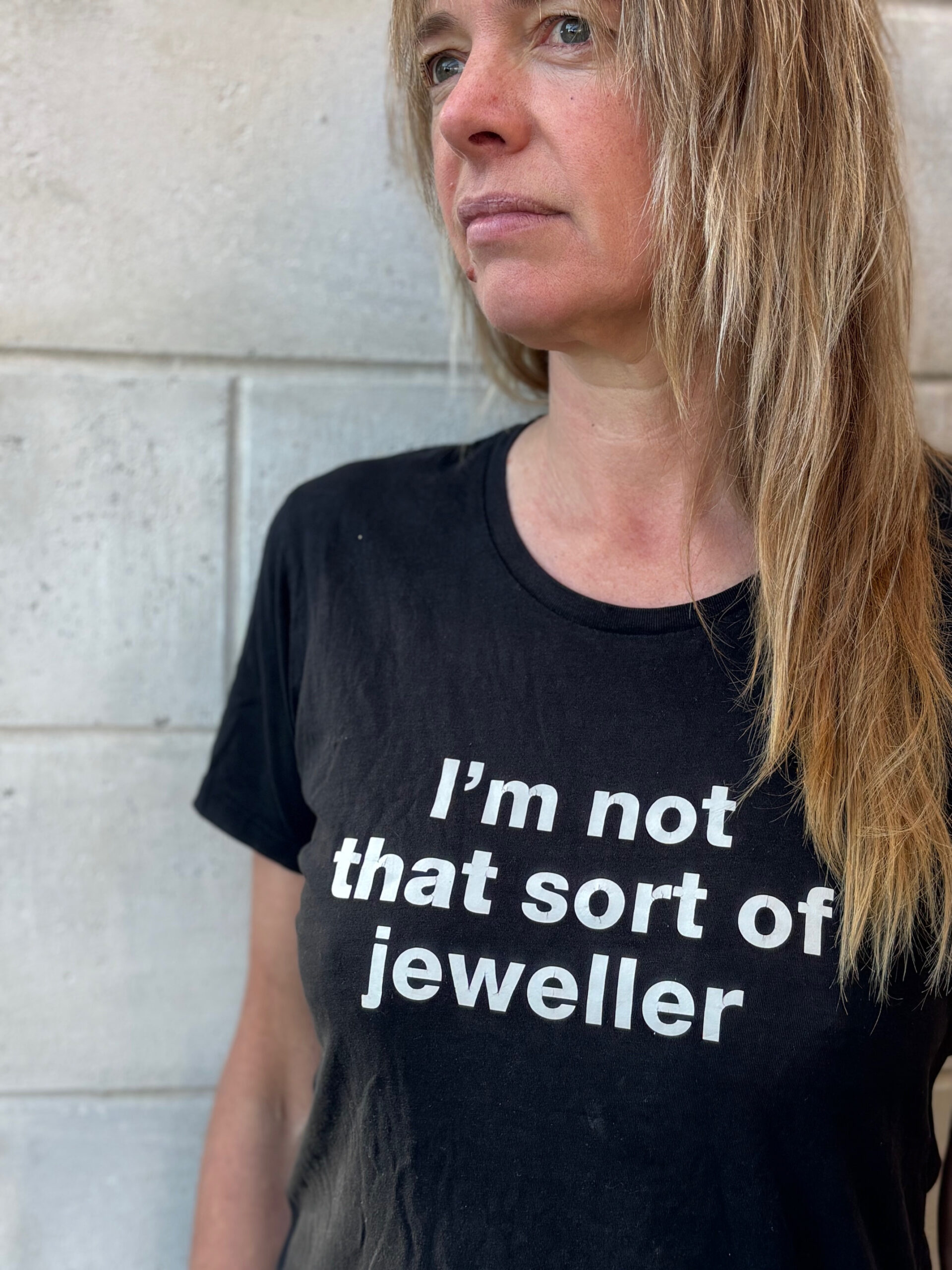
An interview with Bowen about The World Takes Shape But Will Not Stay
| Meet the Artist – Amelia Pascoe |
| To coincide with Amelia Pascoe’s show, The world takes shape but will not stay, which features as part of the group show, Adornment – The Makers, we thought we’d ask Amelia a few questions about her practice. Adornment – The Makers, is on at Bowen Galleries until Sunday 7th April. |
| Could you outline your practice? What do you do, and why do you do it? |
| Well. I’m a jeweller, but… |
| I describe my practice as straddling the boundaries of object and adornment. I like to play with the ambiguity of where on that spectrum an individual work sits. I have a project-based approach that has spanned a broad range of interests, materials, and outputs – from metal, wood, and old shoes, to blown glass, photography, and embroidery. There are also recurring themes. My work tends to develop through an interplay of ideas and making. Documentation of the process can be as much a part of the work as the final outputs. |
| How big of a factor is wearability for you when you’re making jewellery? Does it guide the process, or do you view it more as an added bonus? |
| I like to make wearable pieces and I like to see these being worn. However, I remain open to where an idea or process might take me. I won’t force a work into the wearability space if I think it will be better represented in other ways. In 2018 I completed a First Class Bachelor of Fine Arts Honours (Sculpture) and really enjoyed removing potential constraints associated with jewellery and adornment. Otherwise jewellery and the concept of jewellery have remained a constant thread. |
| The book Art and Physics: Parallel Visions in Space, Time and Light by Leonard Shlain was the trigger behind the development for the work in this show. Could you speak a little on why this book impacted you so profoundly? |
| I came to the arts after a long time studying and working in science-related fields (which I still do). I love to play with real and imagined connections between these and other disciplines. I am intrigued by the tension between Apollonian (logical, rational) and Dionysian (intuitive, divergent) thinking, and the role that each plays in artistic and scientific, creative thought. I also love a good story. The book Art and Physics is based on the idea that visionary artists often foreshadow later discoveries by revolutionary scientists. This sits firmly within my spheres of interest. The book is filled with examples of historical characters, their works, ideas, and discoveries. The pieces in this show are visual responses to some of these through a contemporary jewellery lens. |
| How do you think those ideas manifested in these works? |
| Renaissance painter Giotto di Bondone (1276-1337) features heavily. He was one of the first known artists to use perspective in his paintings (so distant objects look smaller), and to show an object as it looks when viewed from an angle (so that a circle appears as an ellipse). However, it was over 100 years later before perspective was described scientifically (by mathematician, artist, and architect – Leon Battista Alberti). In the show, three brass rings (suitable in size for a ring, a bracelet, and a neckpiece) are positioned on a large rimu cone so that if you put your eye at the apex of the cone and look down, they all appear to be the same size. Giotto was also one of the first artists to tell a story in a painting through capturing a single moment in time (instead of by showing multiple events in a single image). When viewed from a distance the series of two-dimensional rings balanced on the tips of the smaller cones appear as multiple versions of the same ring, viewed from different angles. Or perhaps they represent a single ring rotating through time. It is also said that Giotto won a commission with the Vatican by drawing a perfect circle using his body as a compass. In the pendant series, the polished brass circle has been drawn with a compass. The matte versions are my own hand drawn attempts. There are synergies too with Plato’s concept of perfect forms (circles, spheres, cubes and pyramids) that only exist on a higher plane, and where all shapes in the visible world are inferior copies. Over recent times, I have also turned to other forms of literature (poetry and fiction) for inspiration. The title of this body of work, The world takes shape but does not stay is a line from Bill Manhire’s Poem beginning with a line by Ralph Hotere. The line itself, and its link to Hotere’s work, which encompasses large black perfect circles seemed very appropriate. |